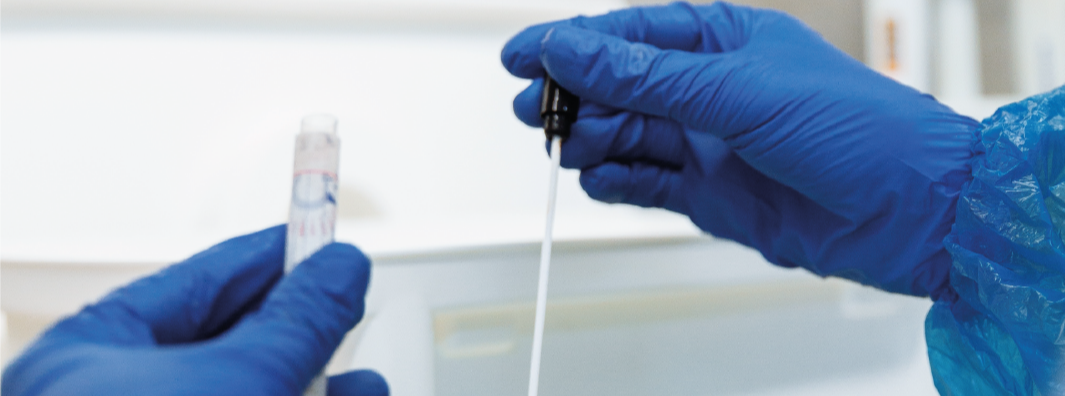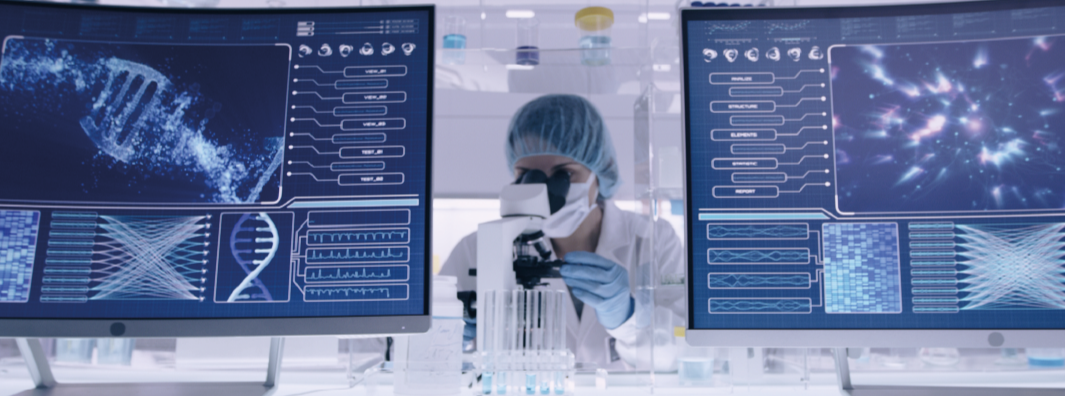-
TrendsHealthcare
-
SectorHealthcare and Pharmaceutical Industry
-
CountriesSpainMexicoPanamaDominican RepublicPeruColombiaEcuadorBrazilArgentinaChileUnited States
After being diagnosed with cancer, patients experience all kinds of feelings. Public-private partnerships that offer a joint response are key to defeating the disease, but if patients are to regain hope, we also need to employ fact-based communication that gives them the information they need.
Introduction
Cancer is one of the leading causes of death and an important barrier to increasing life expectancy worldwide. According to World Health Organization (WHO) estimates, in 2019 cancer was the first or second leading cause of death before age 70 in 112 of 183 countries, and it is third or fourth in 23 others. Cancer’s prominence as a leading cause of death is partially a reflection of the marked decrease in mortality rates due to strokes and heart disease in many countries.
At the same time, according to GLOBOCAN, the toll from cancer incidence and deaths is growing rapidly worldwide. This is the result of an aging and growing population, as well as changes in the prevalence and distribution of the main risk factors for cancer, many of which are associated with socioeconomic development.
For anyone who is diagnosed with cancer of any kind, the news is a heavy blow that causes lifestyle changes for the patient and family members. But the biopharmaceutical industry has been focusing on researching and developing better medicines based on an improved understanding of how the human body functions through advances in diagnostic methods such as the genotyping of different types of cancer. This has led to a 29% reduction in death from the disease since its peak in 1991 according to a report from Pharma. Despite these achievements, these innovations have not been adopted quickly in treatment models, which limits patient access to treatments that are revolutionizing therapeutic approaches to cancer. This leads to feelings of sadness, anxiety, and even hopelessness. That is why it is important for pharmacological and diagnostic cancer innovations to reach those who need it when they need it, in both developed and emerging countries.


Despite all the advances in research, the mainstay treatments for most cancers continue to be surgery, chemotherapy, and radiotherapy. According to data from the U.S. National Cancer Institute, 50% of cancer patients still receive radiotherapy at some point in their treatment. This can sometimes cause harsh side effects, and its effectiveness depends largely on the area being treated and the stage of the patient’s cancer.
Research is leading to the development of a new class of medications called radiopharmaceuticals (radioactive medicines), which administer radiotherapy directly and specifically to cancer cells. A growing number of clinical studies have tested new radiopharmaceuticals, showing that radiotherapy directed at cells could reduce the risk of long- and short-term side effects while destroying deposits of cancer cells. According to the U.S. National Cancer Institute, these medications will transform radiotherapy in coming years.
Currently, biopharmaceutical companies are developing 1,300 medications and vaccines for the series of diseases we call cancer. Research is at varying stages, including clinical, and some compounds are already awaiting review by regulatory authorities.
“Now, thanks to human genome sequencing and pharmacogenetics, it is possible to tailor treatment to the patient’s profile and determine how effective these substances will be”
Emotions Associated With Diagnosis and the Need for Better Communication
Cancer treatments are undoubtedly evolving. Patients increasingly have innovative alternatives to achieve better quality of life thanks to the development of new and better medicines by the medical community and researchers, who are driven by their passion to defeat cancer and make a difference in people’s lives.
But not all the news is good. A cancer diagnosis marks a before and after in a person’s life, and it completely changes how patients – as well as their families and friends – perceive reality. The complex emotional, lifestyle and environmental changes can become so overwhelming that it becomes indispensable for an individual to understand the stages and feelings they are going to experience. An understanding of the entire process – from diagnosis and treatment to, in many cases, full remission – can help not only patients, but also health professionals, governments, and the companies that develop these treatments. These groups must face the challenge of properly communicating the value of innovation, offering treatments, and/or forming agreements and taking steps that will make a difference.
The Six Most Common Emotions Surrounding a Patient Diagnosed with Cancer
In September 2021 , the Journal of the American Medical Association (JAMA) published a controversial proposal arguing that new medical emojis are needed: Organs, diagnostic procedures, and clinical trials. At a time when emotions are directly tied to communication, we offer these images to represent the emotions associated with the journey of a person diagnosed with cancer.
Sadness : Is my diagnosis a death sentence?
Cancer is everywhere. Society is so accustomed to reading, hearing, and talking about cancer that, ironically, when an oncologist diagnoses a loved one with the disease, it’s as if we were watching a movie with a distant voiceover. We fail to realize that this word, which we thought was at once so immediate and so far away, is about to transform our lives and the lives of those around us.
The first thoughts of those affected always take the form of questions: Why me? Did I not take good enough care of myself? Is there a treatment? Is this the end?
It is important to answer them from the outset and keep this initial sadness from turning into long-term sadness, which can lead to depression (according to the National Cancer Institute, depression affects 15% to 25% of patients with the disease during the weeks following a cancer diagnosis). As such, it is vital to foster conversation about new therapies and available alternatives through clear and consistent communication, bringing the hope innovations offer closer to patients and their physicians.
We must first show confused patients themselves and their families the scientific evidence. Then, we have to create spaces to share this knowledge among medical and scientific communities, patient groups, payers, and decision makers, as well as the media. The purpose of all this is to generate consensus about therapeutic value and determine the type of treatment that is best for each specific case, as well as to eliminate the initial feeling of fear and hopelessness.

Frustration : Do I have access to appropriate care and medications?
Once the disease is understood and the initial shock of the diagnosis passes, questions focus on getting more information about the types of treatment available in the patient’s region. At this point, those impacted can start to feel frustrated, as they realize that the speed of scientific innovation and the implementation of these healthcare technologies is not equal (in time or type) in some countries, especially in Latin America. There, many national anti-cancer programs are still lacking or exist only on paper, given the perception that they are too expensive.
Facing the major barriers to access is one of the most significant current challenges for entities and countries that use approaches based on price rather than on value, comparing the relative costs with the benefits of different healthcare procedures rather than using new, more comprehensive, and focused evaluations such as cost-utility analysis. This aims at measuring benefits according to patient needs, as recognized by their physicians and in accordance with their health status. Pharmacoeconomics experts recommend reformulating how healthcare resources are evaluated, creating a narrative for highlighting the value of investing in innovations that improve quality of life and save millions of people around the world.
This is the only way we will be able to break down barriers to access and support patients at a time when they are adapting to both physical and emotional changes, as well as changes to their daily routines and social lives. With this, they can look at themselves in the mirror and gather strength to keep the difficulties from affecting their emotional state and overall health.
“It is vital to foster conversation about new therapies and available alternatives through clearand consistent communication”
Confusion : Lack of understanding and disinformation
Feelings of confusion and chaos intensify amid the whirlwind of information patients and their families receive. This comes in addition to what they look up online during long, sleepless nights, during which they often fall for clickbait – a term used to describe sensationalistic or misleading headlines designed to attract the largest possible number of clicks.
Even people who have decided on treatments and have physicians do not always manage to avoid getting lost in self-help pages, websites with survival statistics for their own diseases, alternative treatments, or groups of people on social media who share their experiences. Feelings of curiosity and the need to find a solution can cloud thinking, because when it comes to potential treatments for cancerous tumors, it is hard to tell hoaxes from reality.
Therefore, to combat confusion, it is vital to conduct awareness campaigns to better inform patients, as well as insist on advancing the discussion and increasing the dissemination of clinical research.
But how can this be done, when some studies confirm that users are more likely to be interested in erroneous information than in facts? That has been demonstrated by Dr. Skyler Johnson of the Huntsman Cancer Institute, who showed that among the most popular articles published on social media about the four most common cancers in 2018 and 2019, 1 in 3 contained false, inaccurate, or misleading information. Most of this disinformation about cancer was potentially harmful, promoting treatments with no confirmed benefits as alternatives to treatments with benefits confirmed in rigorous studies, for example.
It is a difficult issue to resolve, because the truth is sometimes hard to recognize and involves numerous theoretical concepts while lies spread much more easily, much as cancer spreads through the body. Therefore, it is indispensable to have reliable sources, such as initiatives from UNESCO ( which offers tips to combat disinformation) and the National Cancer Institute (which offers trustworthy resources to help healthcare providers, educators, and community members understand, identify and stop the spread of health-related disinformation in their communities). They should be standard practice for everyone involved in the fight against cancer, and, consequently, in working toward a healthier society and a healthcare system that meets patient needs.
Powerlessness : Alone against the world?
People with cancer often feel alone or isolated, since it is hard to bring up the issue of cancer with friends and family members, or perhaps because they are unable to participate in the pastimes and activities that they used to enjoy. In addition, they find themselves in a situation where they need extensive external support and feel dependent on others.
But there is even more to this issue: Patient survival and access to new treatments is inevitably tied to third parties. First among these are scientists, who must find new pharmacological solutions and treatments for the disease; second are governments and heads of cancer treatment programs, who must prioritize healthcare reform; and, finally, there are the drug companies, who can distribute, invest in, and provide access to innovative medications.
To avoid these feelings of powerlessness and keep patients better informed, a new relationship model for better decision making is needed. Public health policymakers must identify their role and relevance in the sector’s ecosystem, as well as specific needs, and allow for a differentiated narrative to impact each audience and achieve a more just evaluation of new healthcare technologies in a way that benefits patients. The impact of a good general relationship will generate positive attitudes that will undoubtedly benefit global public health.
Thanks to analysis of the political context, implemented programs related to the disease, reports from specialized consultants, and data monitoring, it is possible to develop a renovated relationship strategy to drive change and prioritize healthcare innovations as a constant, unmovable part of the public agenda.
“People with cancer often feel alone or isolated. They find themselves in a situation where they need extensive external support and feel dependent on others”
Fight : Raising voices against cancer TOGETHER
Being a post-pandemic cancer patient provides a very different experience from what it was in the past. During COVID-19, people came together in unprecedented ways to support each other and create communities around the most vulnerable, as well as to demand more action from both governments and businesses.
This communitarian tendency is here to stay, and it can be helpful to cancer patients who, now more than ever, feel strong enough to discuss the need for more comprehensive education and create grassroots movements; that is, to exercise the right of communities to come together and influence the issues that affect them in their daily lives.
In other words, more and more people are advocating for new cancer treatments and the creation of an egalitarian, fair healthcare system that will gradually move toward meeting the final challenge: Access to new therapies and information about scientific advances. It is a new paradigm that creates space for patient associations to join this movement through mobilization strategies that inspire positive change toward a more equitable healthcare system that provides access to medical services, medications, and information.
Hope and Optimism : More research, more medicines, more channels
Once people have accepted that they have cancer and start fighting it, they often feel hope and optimism. There are many reasons to embrace this feeling: Millions of people who have had cancer are alive today, the chances of living with and surviving cancer are better than ever, and people with the illness can lead active lives even during treatment.
But the reasons for optimism do not stop there. Advances in treatment and diagnosis of many kinds of cancer happen because clinical trials, especially for immunotherapies, are increasing, developing many medications that combine therapies. Many companies invest years into developing vaccines focused on cancer cells and continuing research into how to focus on specific types of cancer.
Meanwhile, new technologies are a great opportunity for drug companies to establish closer ties with their audiences. Thanks to data-driven marketing experts, it is now possible to build a methodological model targeting first-level audiences based on their online behavior, as well as define social behavior that will be very useful in the design and delivery of high-impact communication materials that can have long reaches and greater message penetration.

Looking Ahead: Offering a Joint Response
The pharmaceutical industry is undoubtedly working hard and making big investments in research and the development of innovative treatments to fight this life-threatening disease. Even so, inequalities and delays in adoption persist, to the detriment of thousands of patients.
So if we want to overcome this persistent problem, decisive efforts are needed from public-private alliances. They must offer joint responses and improve efforts to fight cancer, and all stakeholders must do their part. Patients can take greater care with their treatments and get involved with the demands made on governments. Drug companies can prioritize new treatments and alternatives, such as targeted therapy, immunotherapy, and personalized medicine. And government policymakers can focus on the value and benefit to patient lives rather than just calculating the cost.
Only then will we honor all those cancer patients who have undergone this process with tenacity, a fighting spirit, and extraordinary courage.
Authors
Georgina Rosell
Javier Marín



